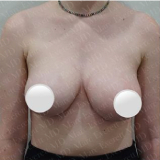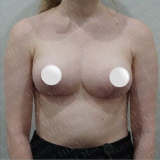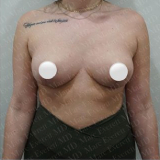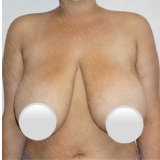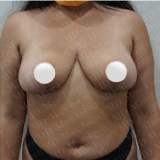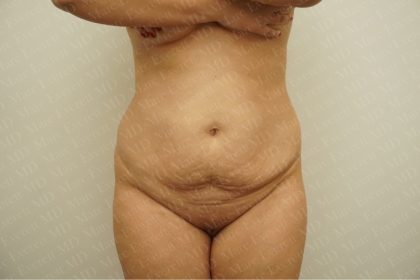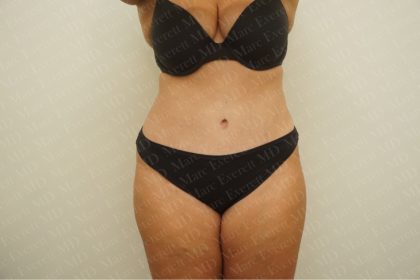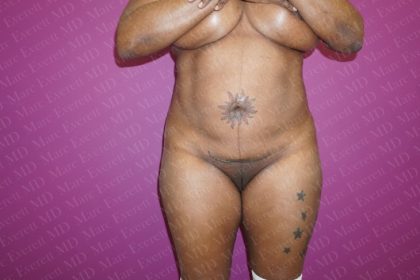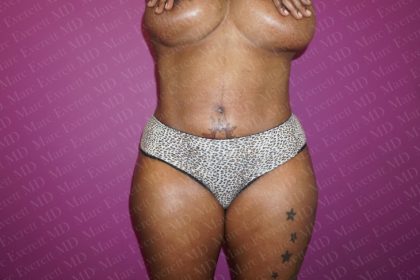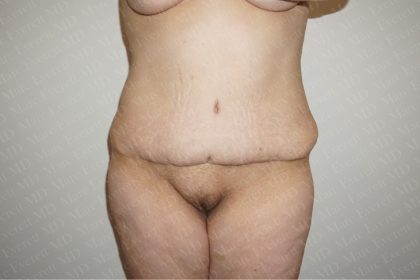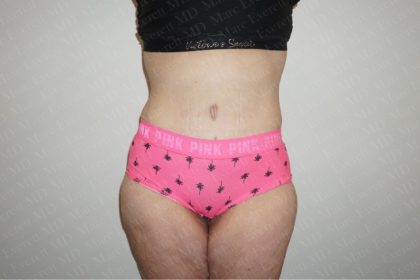Tummy Tuck
Consultations offered at our two convenient locations in Manhattan, NY and Queens, NY
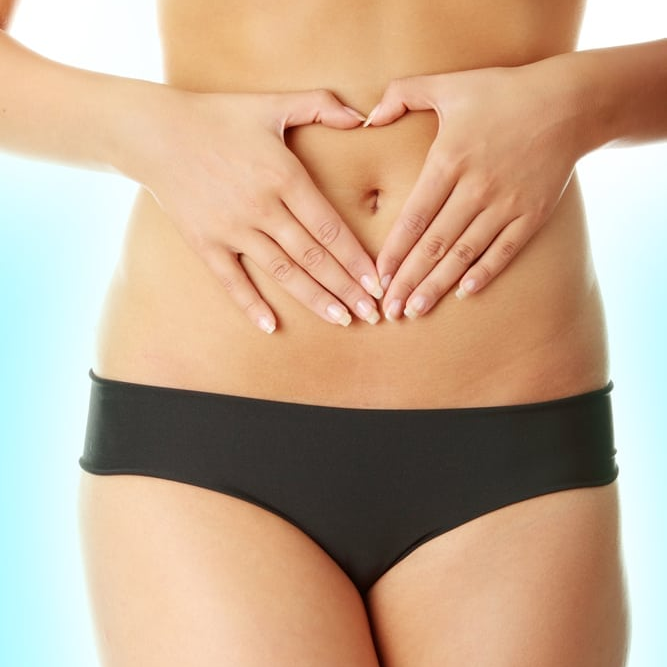
A tummy tuck, also known as abdominoplasty, is a transformative surgical procedure that focuses on improving the appearance of the abdomen. This procedure effectively removes excess skin and fat, while also tightening the underlying abdominal muscles to create a flatter and more toned midsection.
If you are interested in abdominoplasty, NYC-based Dr. Marc Everett offers exceptional results that can provide you with the look and confidence you deserve. To learn more, call (212) 774-7715 or contact our office to schedule an in-person or virtual consultation.
Contents
Before and After Photos
About Tummy Tucks
Abdominoplasty, commonly known as a tummy tuck, is a surgical procedure used to trim away loose skin, remove excess fat, and repair muscles in the abdominal region. And when it comes to a tummy tuck, NY surgeon Dr. Marc Everett has both the experience and the expertise that you need to achieve results that you’ll love.
If you have excess skin or stubborn pockets of fat in your abdomen, then NYC tummy tuck surgery can be used to sculpt a flatter, tighter midsection. A tummy tuck procedure can target a number of commonly cited aesthetic concerns, including:
- Stubborn pockets of belly fat
- Stretch marks around the midsection
- Loose skin from weight loss or pregnancy
- Unfavorable C-section scars
- Abdominal wall separation from pregnancy
Lipoabdominoplasty
Dr. Marc Everett is proud to offer tummy tuck procedures to his patients, including the comprehensive lipoabdominoplasty procedure that combines liposuction with an abdominoplasty. Motherhood and weight loss are a cause for celebration, although they can take a toll on your body. If an unflattering midsection has stripped you of your self-confidence, then let Dr. Marc Everett, the best tummy tuck surgeon in NYC, sculpt the tighter, flatter stomach and more well-contoured midsection that you deserve.
Mini Tummy Tuck
A mini-abdominoplasty, or mini tummy tuck, is a popular procedure that targets only the lower abdomen to create a tighter, slimmer stomach. Patients with loose skin, excess fat, and abdominal separation located below the navel are suitable patients for a mini tummy tuck. Patients with any postnatal or weight loss concerns situated above and below the navel are better candidates for a traditional abdominoplasty.
What is Diastasis Recti?
Diastasis Recti, also known as abdominal separation, is a common postpartum condition that affects the abdominal muscles. Research indicates that roughly 3 in 10 women suffer from the condition 12 months postpartum. (1) During pregnancy, the abdominal wall stretches to accommodate the growing baby, causing the rectus abdominis muscles to separate. This separation can lead to a bulging or protruding belly, weakened core muscles, and lower back pain. As diastasis recti is typically caused by pregnancy, it may not be a concern for every abdominoplasty patient.
Benefits of a Tummy Tuck
- Improved body contouring
- Increased self-confidence
- Enhanced clothing options
- Strengthened abdominal muscles
- Improved physical comfort:
- Reduced stretch marks
- Improved posture
- Enhanced abdominal muscle definition
- Long-lasting results
Who is a Good Candidate for a Tummy Tuck?
Good candidates for abdominoplasty will have loose abdominal skin and excess fat around the midsection, along with abdominal separation or an unfavorable C-section scar if the patient has previously been pregnant. The ideal candidate will be a non-smoker in good health with realistic expectations about the procedure. Dr. Everett also accepts patients with a Body Mass Index (BMI) up to 35, although lower is more optimized to reduce the risk of complications. (2)
All female patients should be done having children, as future pregnancy can harm results.
We will perform an in-person or virtual evaluation during an initial consultation to determine if you are a good candidate for the procedure.
Tummy Tuck Procedure
Abdominoplasty is completed under general anesthesia. If the patient is undergoing a lipoabdominoplasty procedure, then liposuction will be used to remove the desired amount of fat before moving on to the tummy tuck.
Two incisions are made during abdominoplasty: one placed around the navel to separate the belly button from the skin and a second, placed above the pubic region that curves horizontally from hip to hip. The second incision will be made in a location that allows any scarring to be covered by most types of clothing, including bikini bottoms. The exact length of the incision will vary from patient to patient, depending on how much loose skin needs to be removed.
After the two incisions have been made, the abdominal skin is lifted off of the muscle. If necessary, the abdominal muscles are then repaired by tightly suturing the two sides closer together.
Once the abdominal muscle has been repaired, the excess skin is then stretched downwards. Any loose skin that overlaps the bottom incision line is cut away. Any stretch marks, liposuction incisions, or C-section scars will also be removed if they are located within the excess skin. The previous hole of the navel is typically removed, so a new hole is cut in the tightened skin and then sutured to the belly button itself. The bottom incision line is then stitched together with the taut skin to complete the procedure.
Recovery
Following abdominoplasty, all patients return home the same day. Common side effects include swelling, bruising, soreness, and numbness in the targeted area. Changes in sensation are common in the lower abdomen following a tummy tuck and may last days to months. Bruising, soreness, and swelling will improve significantly over the first couple weeks of recovery, although swelling can take several months to subside entirely.
Any non-dissolvable sutures and surgical drains will be removed five to 10 days after the surgery. You will need to wear a compression garment around the midsection for several weeks to promote a quicker and healthier recovery. Compression helps to control and reduce swelling, while also providing support to the abdominal tissues as they settle into place following surgery. The length of recovery will vary, but patients should plan on taking one to two week off from work.
You will need to avoid strenuous activities and exercise during the first few weeks of recovery, although patients will be encouraged to walk and move around regularly to promote healthy blood flow while the body heals. Bending over and placing pressure on the incision or affected areas can impede or interrupt recovery, however. Most patients can resume exercising in four to six weeks, although extra care and time will be needed if the abdominal wall was repaired during the procedure.
Results
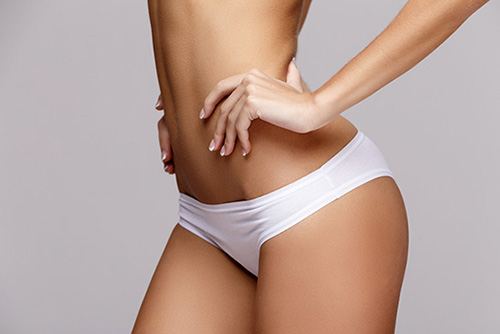
Results will be visible immediately, although final results will take some time to develop. Final results will take up to six months to come in as swelling continues to diminish. The incision scars will appear red and puffy at first but will gradually fade into thin white lines over the course of one year. Scars can take up to two to three years to reach full maturation.
Cost of a Tummy Tuck in New York
The cost of your procedure will be determined once a personalized treatment plan has been created for you. If loose skin and excess fat in your abdomen have left you feeling uncomfortable in your own body, then visit Marc Everett MD to learn more about abdominoplasty. Dr. Everett will listen to all of your concerns and walk you through the procedure step by step. Dr. Everett’s patients receive attentive and personal care from our professional staff before, during, and after their procedures. To book an appointment, call us today at (212) 774-7715.
For more information about procedures in Manhattan and Queens, NY by Dr. Marc Everett, please read our blog.
FAQ
Do I need a tummy tuck if I had a C-section?
Tummy tuck evaluation is on a case-by-case basis. However, several changes happen during pregnancy, especially after a C-section, that require abdominoplasty to repair. For some patients, there is not only an issue of “baby weight,” which can easily be addressed with lesser invasive surgical procedures. There is also the problem of excess skin and abdominal muscle separation and dysfunction.
Over the first few weeks after delivery, some of this will bounce back due to the skin’s natural elasticity. However, some may not. What remains loose afterward will not change — there are no exercises or natural solutions to cause the skin to recoil. Think of it like a rubber band that you stretched out too far.
Changes to the rectus abdominis muscles may also warrant abdominoplasty. These are the paired muscles that make up the front and center of your abdominal wall. Before pregnancy, these muscles are closely aligned in a straight up and down fashion, with no gap in between. During pregnancy, the uterus stretches out and rounds these muscles, causing them to separate at the weak spot in the middle. This leaves a permanent zone that runs vertically along the center with no muscle, resulting in core muscle weakness.
Known as “rectus diastasis” this happens, to some degree, in all first-term pregnancies. It is made worse by additional pregnancies and is further complicated in C-section patients. This is because the procedure damages a significant amount of the nerves running within the lower rectus muscles, responsible for helping to keep those muscles’ resting tone. When the resting tone is lessened, there is less resistance to “sucking in your gut” and the inner belly contents can push outwards, making your belly seem rounder when you aren’t flexing your abdominal wall.
The solution to this is abdominoplasty, with or without liposuction. The key part of abdominoplasty for C-section patients is the reconstruction of the abdominal wall. If it’s belly roundness that bothers you, imagine this.
The skin and fat on your belly is like the blanket on your bed. It can be thick and fluffy like your winter down blanket, or if you have lost the baby weight, and you have minimal extra skin, then it can be more like a top sheet. When either the blanket or sheet lies on your bed, it’s flat. But if you take that blanket or sheet and throw it over your kitchen chair, it takes the shape of your kitchen chair. Either way, thick or thin, it takes the shape of what lies beneath. In other words, if your abdominal muscles are round, have lost their tone, and there is a space absent of muscle in the center of the abdomen, your belly may appear and feel rounded, even if you lose weight.
Liposuction can be used to thin your “blanket” into a “sheet” and can be used to contour your waistline and re-establish the hourglass shape of your hips. However, it is not a substitute for abdominoplasty in patients who need abdominal wall reconstruction.
Can abdominoplasty be combined with other procedures?
Absolutely. An abdominoplasty can be part of a mommy makeover procedure that targets multiple areas for full-body rejuvenation. Abdominoplasty is commonly paired with a breast lift, breast augmentation, or liposuction in other areas of the body. Let us know during your initial consultation if you are interested in additional procedures, and we will create a personalized treatment plan that meets all of your needs.
What kind of scarring can I expect from a tummy tuck?
Abdominoplasty scars are located around the navel and above the pubic region. The scar around the navel is typically not noticeable, as it is situated within the belly button itself. The horizontal scar from the skin excision is placed in the bikini line where it can be easily hidden by clothing. The scar will curve down slightly toward the center and stretch from one side of the midsection to the other. The exact length of the scar will vary among each patient. We will work with you after the procedure to help promote a healthy and favorable healing process, ensuring your scarring is as minimal as possible.
What’s the difference between a regular tummy tuck and a lipoabdominoplasty?
Lipoabdominoplasty combines liposuction with an abdominoplasty for a comprehensive approach to body contouring. Patients with mild to moderate excess fat that has been resistant to a healthy diet and exercise routine are good candidates for lipoabdominoplasty. For patients with loose abdominal skin and a minimal amount of fat, a traditional abdominoplasty tends to be the recommended procedure. We will determine which option is better for you after an in-person evaluation.
How long does a tummy tuck procedure take?
The length of the procedure will vary with the addition of liposuction but tends to last between two and four hours.
References
- Cavalli M, Aiolfi A, Bruni PG, et al. Prevalence and risk factors for diastasis recti abdominis: a review and proposal of a new anatomical variation. Hernia. 2021;25(4):883-890. doi:https://doi.org/10.1007/s10029-021-02468-8
- Sadeghi P, Duarte-Bateman D, Ma W, et al. Post-Bariatric Plastic Surgery: Abdominoplasty, the State of the Art in Body Contouring. Journal of Clinical Medicine. 2022;11(15):4315. doi:https://doi.org/10.3390/jcm11154315


